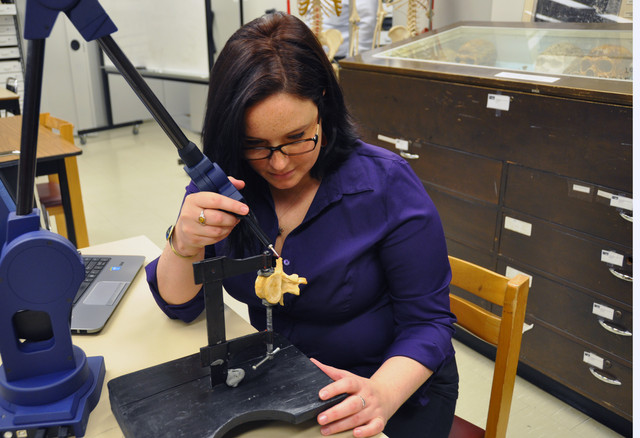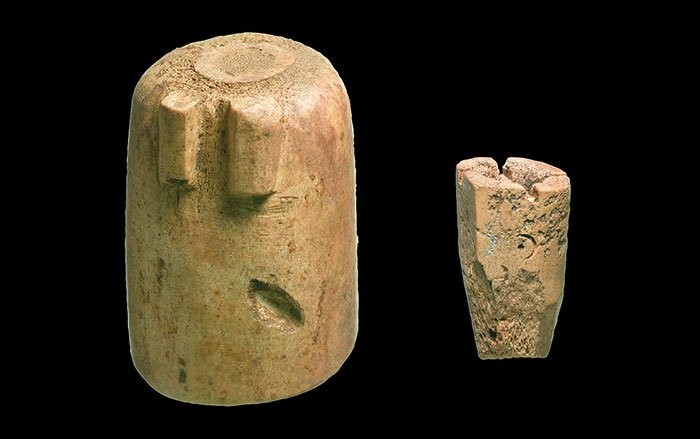
BURNABY, CANADA—Biological anthropologist Kimberly Plomp of Simon Fraser University has investigated the relationship between vertebral shape, upright locomotion, and human spinal health using two-dimensional shape analyses of chimpanzee, orangutan, and archaeological human vertebrae. “We found that some characteristics of human vertebrae differ in shape between those individuals who have a lesion called a Schmorl’s node—a small hernia that can occur in the cartilaginous disc between the vertebrae,” she said in a press release. It turns out that the vertebrae of people with Schmorl’s nodes resemble the vertebrae of chimpanzees. Humans and chimpanzees split from a common ancestor between eight and nine million years ago, and still have 98 percent of DNA in common. Humans evolved to be bipedal, while chimps evolved to be knuckle-walkers. “However evolution is not perfect and some vertebral characteristics, such as the ones we identified as being similar to chimpanzees, may have remained within the human ‘blueprint’ and result in some people having vertebrae that are less able to withstand the pressures of bipedal walking,” she explained. She and her colleague Mark Collard will continue to investigate this “ancestral shape hypothesis” with three-dimensional shape studies. To read more about recent research into human evolution, see "Our Tangled Ancestry."










